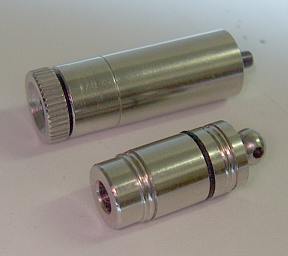Kenom
0
- Joined
- May 4, 2007
- Messages
- 5,628
- Points
- 63
the batteries I'm using are basic lr44 or lr45's. Nothing special about them. I do have three of them in series with no additional components so it's straight off the batts. Like I said. it's not a burnin beast but it does do the job. Another thing that annoys me is there is no on/off switch, so I have to keep a paper board in between the batteries when not in use.
I'll eventually get around to making a switch for the tail section of this but it's not a high priority for me right now.
I'll eventually get around to making a switch for the tail section of this but it's not a high priority for me right now.














